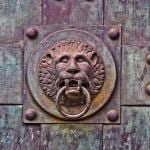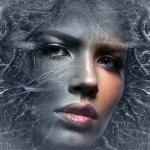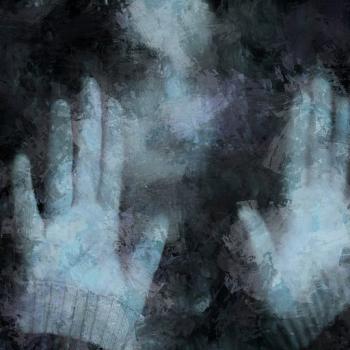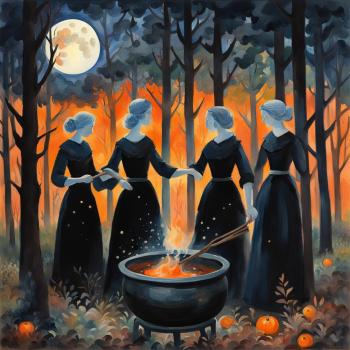I’ve been a pagan for most of my life. Like a lot of people, my first introduction was the kind of watered-down Wicca a lot of people consider to be a common basis of paganism – honoring the (Celtic) Wheel of the Year, calling the quarters, chants ending in “so mote it be”, and, yes, Silver Ravenwolf.
It took me a while to see the vast options that were open to me beyond that. It took me even longer to wade through what I found and filter out the bullshit, fakelore, appropriation, and cis-heteronormativity. The amount of information out there about the various forms of magic, witchcraft, and neopaganism has only grown since then, and a lot of it has grown away from its source altogether, leaving an incomplete picture, or a practice with racism and sexism baked in under the radar. Appropriation of closed practices is especially widespread, with a surprising number of witches and pagans I’ve encountered not acknowledging it at all.

Don’t get me wrong – there’s also a lot of good new information out there that has been well researched, created by people with solid methods and perfectly good intentions. It’s just so much easier to come across something that requires filtering in order to be useful, things that are stolen, or things that are entirely made up altogether being presented as historical fact. I can’t count the number of books I’ve skimmed through, gleaning whatever crumbs of actual significance in between practices from a closed religion, or overt bio-essentialism, or self-aggrandizing tirades.
So, I’m here to help.
Obviously I’m not the be-all, end-all expert; I’m just a witch with a blog. I encourage you to use this as a jumping-off point, and to run anything I write against your own intuition.
First, I’d like to go over some definitions that are often misunderstood or glossed over and not explained at all.
Witchcraft
A word for the practice of using magic in whatever capacity you choose. There’s no one right way, and there doesn’t have to be any religious aspect to it if that’s not your jam. It can be combined with and informed by religion, whether that’s pagan or otherwise (Christian witches and Jewish witches exist. I won’t be going into that because I’m not remotely involved in either, but just so you’re aware that is an option). Witchcraft is often a tool of the oppressed and as such many of us feel a strong commitment to justice and living in right relationship with each other, the earth, and everything beyond it.

Paganism
A vast umbrella term for religions and spiritualities that are largely earth-centered and/or polytheistic. Some people choose to identify as solely pagan because they don’t fit into one belief system or another.
Wicca
A specific religion (or group of religions) under the pagan umbrella. Many parts of Wicca are closed practices, which I’ll get into in a minute. To be honest I don’t know much about it, because as soon as I knew there were other options I ran for the hills. I recommend Raise the Horns if that’s what intrigues you. I bring this up specifically because witchcraft and Wicca are often used as if they’re synonyms, which is untrue.
Polytheism
Believing in many Deities. Often, polytheists will work with multiple pantheons rather than limiting their worship to only one. Some people work with only a small number of Deities but still recognize all others as being Real, in the same way you know all fruits exist even if you only choose to eat oranges and strawberries.
Intersectional
Recognizing the ways different identities affect individuals and their experiences. In my opinion, witches, pagans, and other magical folk have a responsibility to strive for intersectionality. This includes a lot of listening to other people who experience the world, and their practice, differently than you do, especially when that world is racist, sexist, ableist, and cis-heteronormative.
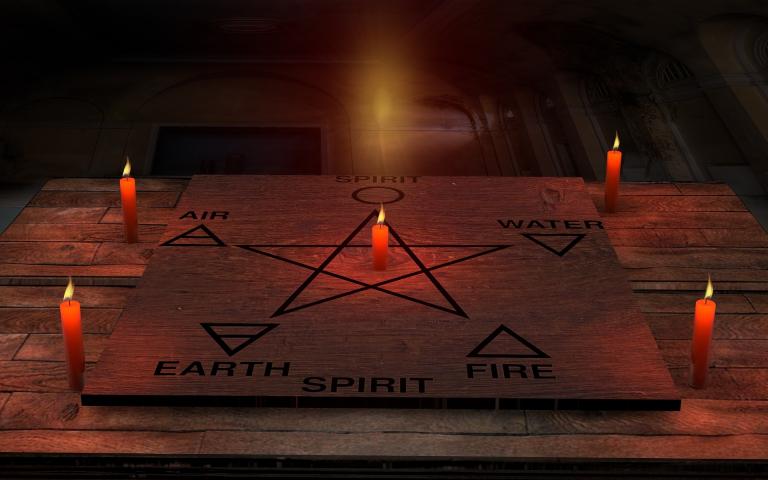
Closed
At its basis, this is a religion, spirituality, or practice that requires some sort of initiation. For example, some branches of Wicca require an initiation in order to become a coven member or participate in rituals that aren’t open to the public.
There are also practices that are closed because of the way their members have been treated in the past and continue to be treated today. An example of this would be the various practices of indigenous, aboriginal, and native communities who have been punished for their practices by our ancestors and our current peers. Outsiders have proven themselves to be untrustworthy and ill-informed, and as such are not permitted to use the magical tools of these communities. The same can be said of African Traditional Religions (often referred to as ATRs) such as Voudou, Hoodoo, and Santeria.
Often, witches and pagans don’t respect these boundaries, unfortunately. Don’t be one of them.
I HIGHLY encourage you to seek out articles, blog posts, and books by members of these communities that can explain how appropriation is harmful as well as downright unfair.
“Your Spirit Animal” is Not a Joke It’s Oppression
PSA: Yes, “Spirit Animals” Are Cultural Appropriation – That Means You
Pagans: Please Stop Stealing Hoodoo
Cultural Appropriation and the Pagan Community: AKA White Privilege
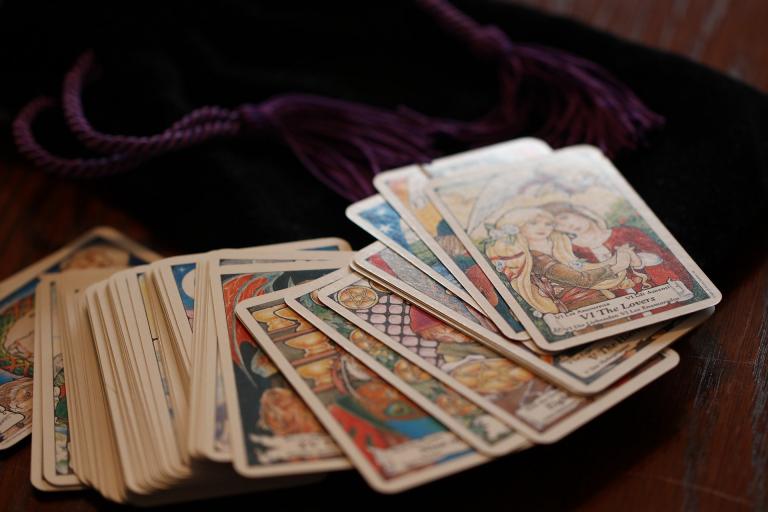
Open
You can probably figure out this is the opposite of closed. These are practices that can be adopted by anyone, even cherry-picked to blend with others to create your unique practice. Some of these are Heathen/Norse (Scandanavian), Hellenic (Greek)/Hellenistic (Greek and Roman), Kemetic (Egyptian), and Reclaiming.
There are a lot of practices and modalities that have become near universal among most pagans, like tarot and other divination, working with the elements, candle magic, crystal use, grounding and centering, meditation, and the use of herbs in spells. You don’t have to use all or any of these, but they can be a good place to start if you’re overwhelmed. In future articles I’ll be going over some of these in more detail, but in the meantime I encourage you to research on your own.
I believe the most important tool you can use to determine where you want your path to go is your intuition. Intuitive Witchcraft by Astrea Taylor is a great place to start; it covers a wide range of practices, with many, many contributing authors, written in a way that’s refreshingly easy to understand.
If you like podcasts, Living Open has a new guest and a new topic every week, so it’s perfect if you want a wide view of the various modalities practitioners use. Eryn also has several solo episodes that cover introductory spellwork, breathwork, tarot, and Reiki.
I also highly recommend reading my previous article on Shielding. You’ll quickly learn that this is one of the most important parts of maintaining spiritual wellness and safety, as protecting yourself during magical workings is especially necessary.
Stay tuned for my next 101 article!



